Permissions
You will require an Access Role with the following permissions:
- Reports
Create a Calculated Column
There may be certain cases where the specific data that you require from a report is not provided as standard from the Reports feature. In many cases, the information required can still be obtained, but only by building a formula that utilises existing columns, mathematical and logical expressions. The Calculated Columns tool allows you to do this.
- From the Report Details page, click the Columns tab.
- Click
 . This will display the New Calculated Column window where you can build and define the calculated column.
. This will display the New Calculated Column window where you can build and define the calculated column.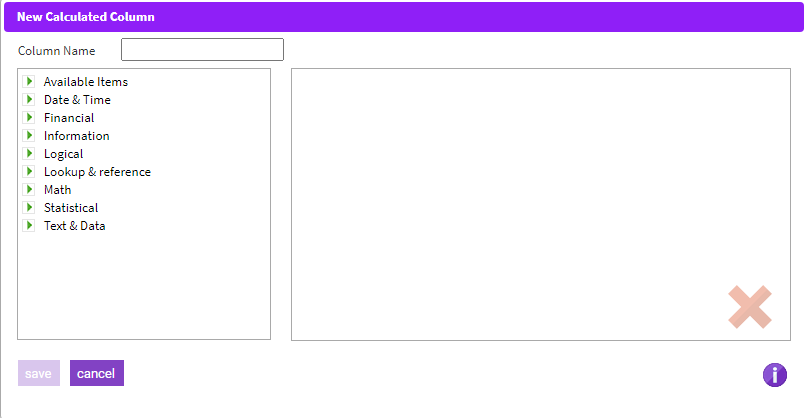
- Enter a Column Name. This will appear in the column header on the report preview.
- Click on a function from the Function List to add it to the Formula Build Area. Functions are grouped into sections such as Date & Time and Financial which can be expanded to show the relevant functions within.
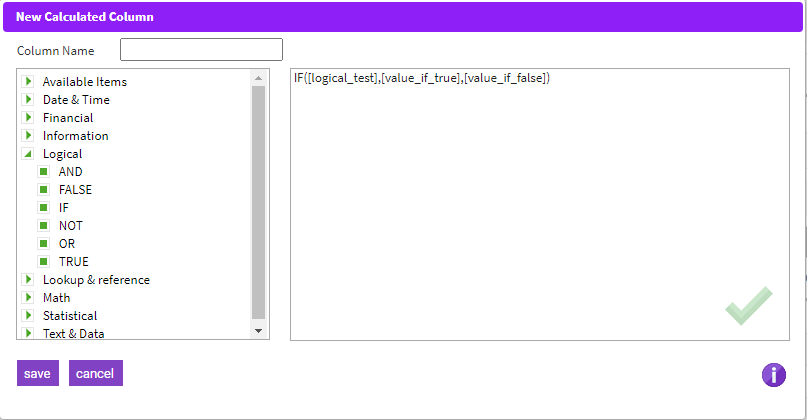
Tip: A tooltip provides an explanation of how a function works and what each of the values within the function require you to enter. Hover your mouse over a function, within the Function List, to display the correct help information.
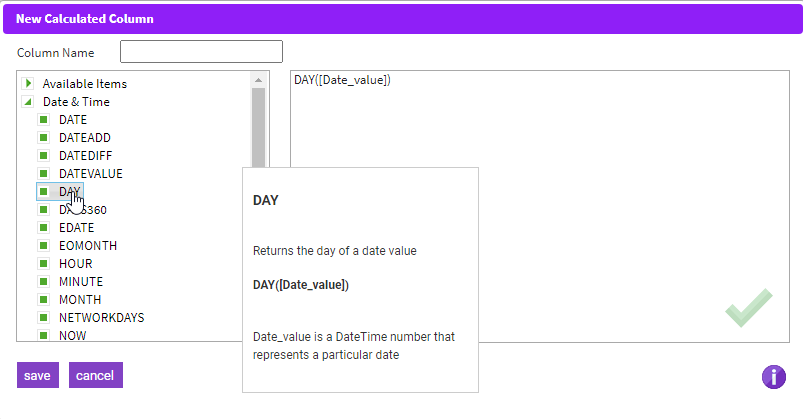
- Replace the text, within the formula, for the values which need specifying (in this example year, month and day).
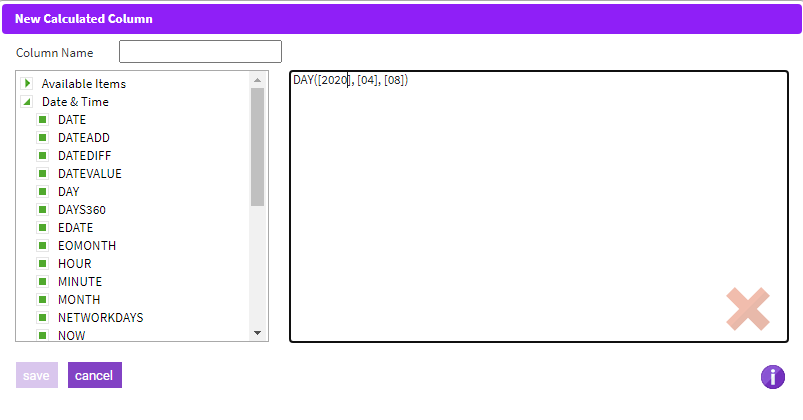
Optional: Enter operators (+ - / * etc.), if required, to build more complex formulas.

Note: The formula will be continually checked for validity while it is within the Formula Build Area, providing access to the Save button when valid.
- Click Save to create the Calculated Column. This will now appear in the report you are creating/editing.
Example
You require a report which tells you if an Expense Item total exceeds a specific value. A Calculated Column can be created which tells you if the claim total value is higher than a specified value, enabling you to identify high levels of spending within your organisation.
Prerequisite: Ensure that you have added the correct columns to your report that you want to use within your Calculated Column. For this example, Total is required.
- Click IF from the Logical section of the Function List.
- This will provide you with the following values which need specifying:
- [logical_test] - Replace [logical_test] with [Total] by clicking on the field within the Function List, then cutting and pasting it in place of [logical_test].
- >XXX - Type in > followed by the value you would like the expense item to exceed. For this example, 99 will be used.
- [logical_test] - Replace [logical_test] with [Total] by clicking on the field within the Function List, then cutting and pasting it in place of [logical_test].
- Specify the following:
- [value_if_true] - Replace [value_if_true] with the text that you want to appear if the Expense Item exceeds £99. This example displays "Exceeds".
- [value_if_false] - Replace [value_if_false] with the text that you want to appear if the Expense Item does not exceed £99. This example displays "OK".
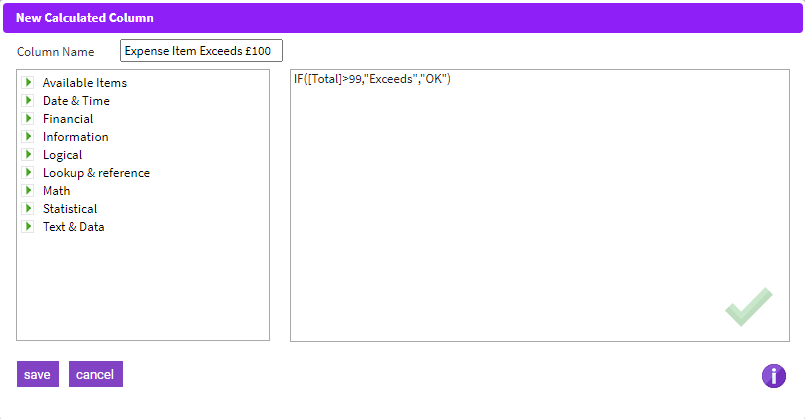
- [value_if_true] - Replace [value_if_true] with the text that you want to appear if the Expense Item exceeds £99. This example displays "Exceeds".






